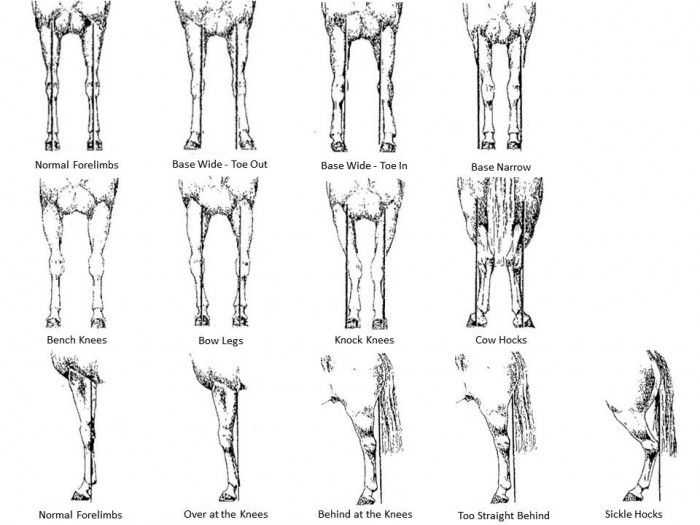
Conformation and risk of injury
When buying a new horse, we tend to look at their conformation. It does not only help us choose a pretty horse, but it also aids us in assessing their quality and even their risk of injury. There are a few characteristics that could point to weak points in our equine’s framework.
This study followed 115 young racehorses to determine which traits are correlated with injuries. They found a few factors that should be considered when assessing injury proneness: the bottom line of the neck, scapular length, angle of the knee as viewed from the side and as seen from the front, and hoof angle ratio.
- Bottom line of the neck: a longer bottom line increases the chance of fetlock effusion in the front limb. Effusion is the increase of fluid in the joint, in this context it could be the result of a trauma or inflammation.
- A longer scapula or shoulderblade decreases the risk of fractures in the front limb
- A horse that is more “over at the knee” has a higher chance of front fetlock problems and fractures of the long pastern bone.
- The “bench knee” increases the chance of fetlock problems. Bench knees (off-set knees): cannon bone is not directly under forearm.
- Hoof angle ratio: an increase of the dorsal hoof angle implied a higher risk of hind fetlock injuries. This is the so-called broken forward hoof.
Do you look at certain angles or measurements when buying a horse?
Expert opinion by Charlotte De Bruyne
These attributes can help us determine our horse’s proneness to certain injuries. It is important to keep in mind that this list is not all-inclusive and that this is based on racehorses. Next to that even horses with all the “right” angles and measurements are still able to get injured. A horse’s conformation is not everything, but it can assist you in making an assessment.
> From: Anderson et al., Equine Vet J 36 (2004) 571-575. All rights reserved to EVJ Ltd. Click here for the online summary.


